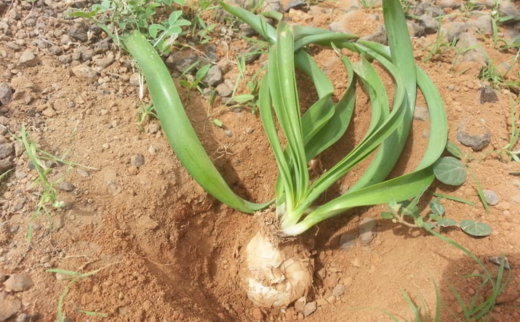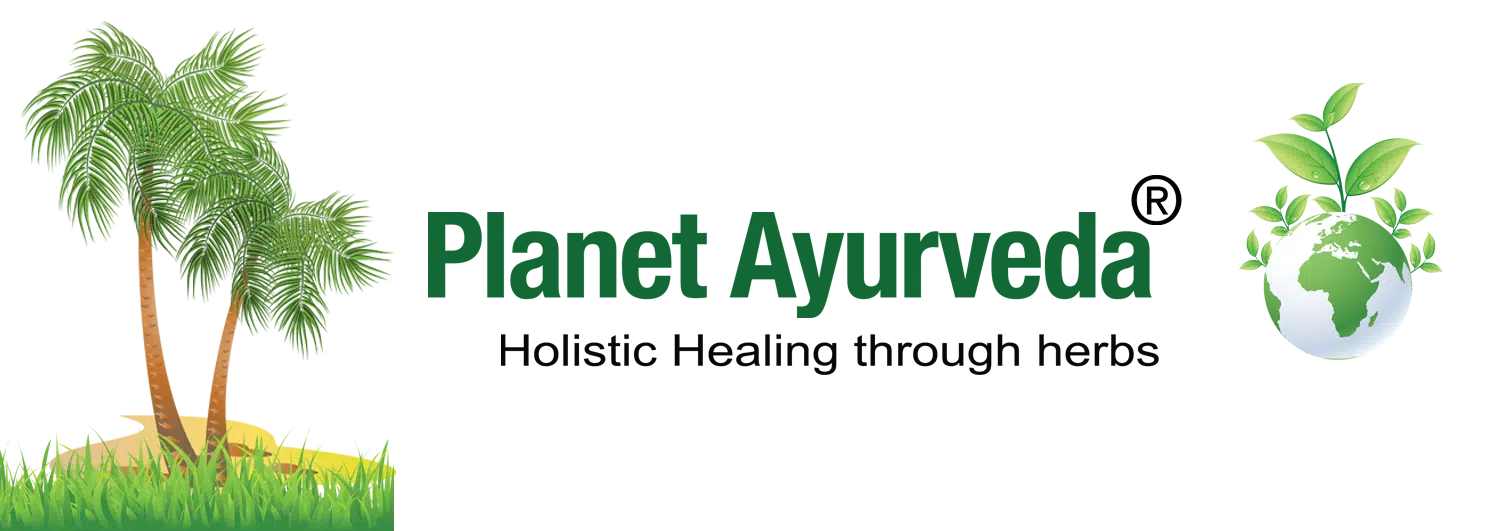Vanapalandu/ Indian Squill/ Urginea Indica Kunth – Ayurvedic Uses, Benefits, Dosage & Therapeutic Actions
Abstract
Urginea indica, commonly known as Indian Squill, is a potent medicinal herb recognised for its wide range of pharmacological properties. It is extensively used in Ayurvedic and Unani medicine for treating cardiovascular, respiratory, and urinary ailments. Its bulb, which resembles an onion, is the primary medicinal part and is known for its cardiotonic and diuretic effects. Traditional knowledge and modern research together highlight its antimicrobial, expectorant and anti-inflammatory actions. The plant thrives in arid zones and produces distinctive reddish bulbs that store its medicinal potency. Its historical value and modern validation make Urginea indica an important botanical drug in natural medicine.

Introduction
Urginea indica, a member of the Liliaceae family, is a smooth, herbaceous plant belonging to a polytypic genus that comprises around 99 species globally, with 9 species documented in India. Commonly referred to as Indian Squill or Sea Onion, it is locally known as Jungli Piyaz. This modest plant typically grows to a height of 45–60 cm. In Ayurvedic medicine, it is popularly called Bon Pollundu and is recognised for its applications in both pharmaceutical and agricultural fields. Among all parts of the plant, the bulb is particularly valued for its wide therapeutic potential. It has been traditionally used as an antidiabetic, antioxidant and anticancer agent, and is also beneficial in conditions like dyspepsia, hypertension, arteriosclerosis, oedema, dropsy, asthma, rheumatism, gout, allergies and for wound healing. Additional properties include expectorant, anthelmintic, digestive, diuretic, stomachic, purgative and it is also employed in managing leprosy, scabies, internal pain and skin diseases.
Scientific Classification
- Kingdom: Plantae
- Clade: Angiosperms
- Clade: Monocots
- Order: Asparagales
- Family: Asparagaceae (formerly Liliaceae)
- Genus: Urginea
- Species: Urginea indica
Synonyms
- Kolkanda – Food for wild animals
- Krimigna – Kills intestinal worms
- Putalu
- Suputa
- Panjala
- Vastrapanjala
- Putakanada
Vernacular names
- Hindi name – Jangli Pyaz, Jangalikanela, Kanela
- English name – Indian Squill
- Bengali name – Banpiaaj, Janglipiaaj, Kande
- Gujarati name – Janglikanda, Ranakando
- Malayalam name – Kanthanga, Kattulli
- Marathi name – Janglipyajha, Rankada
- Punjabi name – Kachwassal, Phaphor
- Tamil name – Nasivengayam
- Telugu name – Adavithellagadda, Nakkavalligadda
- Urdu name – Janglipiyoz
- Persian name – Piyazedashtiehindi, Piyazemoshehindi
- Bombay name – Kachinda, Kolkanada, Janglikanda, Tokesun
- Bengal – Banpiaaj, Janglipiaaj, Kande
- Arabic name – Aansalehindi, Basalefar, Basalelundal
Habitat
Urginea indica is typically found in dry, rocky and barren regions, particularly in peninsular India. It thrives in well-drained, sandy or lateritic soils and is usually seen in deciduous forests or scrublands. The plant is drought-resistant and often emerges during the monsoon season, remaining dormant during dry periods. Urginea indica is commonly found in various regions across India, particularly in Bihar, the Konkan belt, and parts of Himachal Pradesh such as Bilaspur and Mandi. These areas provide suitable climatic and soil conditions that support the natural growth of this medicinal herb.
Morphology
Urginea indica is a perennial herb characterised by its fibrous roots, which emerge from the base of its bulb. The bulb is pear-shaped to conical, resembling a large onion, and measures around six to ten inches in length. It is typically three-fourths buried in sand and covered with transparent outer scales. These scales form concentric layers that are fleshy and range in colour from orange-brown to papery red. Smooth-edged leaves sprout from the bulb in a rosette pattern, measuring about 1–2.5 cm in width and 15–30 cm in length. Flowering occurs during April and May, producing a tall, sturdy and smooth succulent stalk that rises from the centre of the foliage. This floral spike, which can grow up to one to three feet in height, bears closely packed whitish flowers on a purplish peduncle.
Varieties
Scilla indica Baker is another variety similar to Indian Squill. It grows in the sandy soil near the seashore in the southern peninsula, south of Konkan and Nagpur. A similar species S. hohenackeri is found in Punjab. Its tubers are whitish-brown, scaly, bulb-like, as big as nutmeg, round or oval and sometimes pressed from the sides. Its fleshy peel (scales) is very smooth and because their edges overlap each other, they appear to be a single layer. Both these varieties have similar properties. The key difference is that Indian Squill has a Tunicated bulb and Scilla indica has a scaly bulb.
Classical categorisation
- According to Raj Nighantu – Moolakadi Varga
- According to Nighantu Adarsha – Lashunadi Varga
- According to Bhavprakash Nighantu- Haritkyadi Varga
Ancient Verses
कोलकन्दः कटुश्चोष्णः क्रिमिदोषविनाशनः।
वान्तिहृच्छर्दिशमनो विषदोषनिवारणः ।।
(Raj Nighantu Moolakadi varga 84)
According to the above shloka, Indian Squill has a pungent taste and hot potency. It is effective in the management of worm infestation, nausea and vomiting. It antagonises the effect of poison.
Ayurvedic properties
- Taste (Rasa)- Bitter (Tikta), Pungent (Katu)
- Physical property (Guna) – Light (Laghu), Sharp (Teekshna)
- Potency (Veerya )- Hot Potency (Usna)
- Post-digestion effect (Vipaka)- Katu (Pungent)
- Effect on tridosha– Balance Vata and Kapha dosha
Therapeutic properties
- Cardiotonic
- Diuretic
- Expectorant
- Anti-inflammatory
- Antimicrobial
- Laxative (in small doses)
- Emmenagogue
- Anthelmintic
- Hematinic
- Bronchodilator
Systemic actions
External Use
May lead to skin irritation and aggravate blood-related conditions.
Internal Uses:
- Digestive System – May cause abdominal discomfort, nausea, vomiting and diarrhoea. Acts as an anthelmintic and is useful in managing ascites.
- Circulatory System – Functions as a cardiac stimulant and is beneficial in cases of cardiac-related oedema.
- Respiratory System – Helps eliminate excess kapha dosha and is recommended in conditions like rhinitis, cough, and asthma.
- Excretory System – Enhances urine output by improving renal blood flow and stimulating renal cells and is useful in chronic kidney disorders and dysuria.
- Reproductive System – Effective in managing menstrual irregularities such as dysmenorrhea and amenorrhea.
- Satmikarana (Restorative) – Possesses anti-toxic properties.
- Skin – Promotes sweating and is indicated in conditions with itching and skin lesions.
Chemical composition
- Steroidal glycosides – Scillaren A and Proscillaridin A (major active constituents in the bulb)
- Bufadienolides – Thirteen types identified in both roots and bulbs
- Steroids – Present in the bulb, traditionally used for skin problems like psoriasis
- Flavonoids – Including quercetin, known for its antihypertensive effects
- Saponins – Bioactive compounds with multiple therapeutic effects
- Antifungal glycoproteins – Including a novel 29 kDa glycoprotein
- Carbohydrates and mucilage – Mucilage content up to 51% in the bulb
- Esters – Various bioactive forms
- Scillarenin, Scilliglaucosidins, Scillirosidins – Identified among its cardiac glycosides
- Paraldehyde – A compound with sedative and hypnotic properties
- Mindereru’s spirit – Noted for promoting perspiration
- Tartronic acid – Functions as an oxygen scavenger
- Mineral content – Includes calcium oxalate and calcium citrate crystals
- Ash and sugars – Make up around 5% of the bulb composition
- Alkylresorcinols
- Bufadienolides
Modern overview
Anthelmintic activity of Urginea indica
Urginea indica (Indian Squill) exerts potent anthelmintic activity, largely attributed to its bioactive compounds such as alkylresorcinols, bufadienolides and flavonoids. Alkylresorcinols disrupt the integrity of helminth cell membranes, leading to paralysis and death of parasitic worms. Bufadienolides, though primarily known for their cardiac action, also interfere with neuromuscular function in parasites, contributing to their expulsion. Additionally, flavonoids in the bulb exhibit anti-inflammatory and detoxifying effects, helping to reduce intestinal irritation caused by worm infestations. These combined mechanisms validate the traditional use of Urginea indica as a natural deworming agent in herbal medicine.
Antiemetic activity
Studies indicate that Urginea indica (Indian Squill) can exert a gastrointestinal stimulant effect, potentially through activation of the cholinergic system, specifically by engaging muscarinic receptors in the gut wall. This action enhances peristaltic activity and promotes gastric emptying, which can help reduce sensations of nausea and vomiting by preventing gastric stasis, a common trigger for emesis. The active compounds, particularly Scillaren A and proscillaridin A, are believed to modulate gut motility at controlled doses, thus facilitating the smooth transit of food and fluids through the digestive tract. This pharmacological activity supports its use in conditions where delayed gastric emptying or indigestion contributes to vomiting, though caution is advised due to its emetic potential in higher doses.
Practical uses
- The rhizome of Van palandu is ground into a paste and applied externally to treat skin diseases and localised swelling.
- For ascites, fresh juice of the Indian squill rhizome is administered orally in doses of 15-20 ml.
- Heated rhizome juice of Urginea indica is given in doses of 15-20 ml to alleviate symptoms of rhinitis and cough.
- In cases of difficulty in urination, a cold infusion of Vana palandu is consumed in doses of 40-50 ml.
- A decoction of the plant’s rhizome is used in doses of 30-40 ml to relieve dysmenorrhea.
- Due to its action similar to digitalis leaf, the rhizome is prescribed for irregular heartbeat and weakened cardiac muscles.
- A decoction of Vana palandu is given in doses of 25-30 ml to treat intestinal worm infestations.
Part used
- Rhizome
Dosage
- Powder- 60-185 mg
- Syrup- 30-60 drops
- Tincture- 5-30 drops
Special Note
Vanapalandu of Raj Nighantu is accepted as a substitute of Squill or Urginea mariima (Linn.) Baker. This medicinal herb, called Squill, is a good representative of the white species of Urginea maritima (Linn.) Baker which grows on the Mediterranean coast. Since it is very useful, its description is being given here. In Raj Nighantu, Kolkanda is written as ‘Vantishamankrit’ (Controls Nausea) but the wild onion is ‘Vantijanan’ (Causes Nausea).
Conclusion
Urginea indica is a powerful medicinal plant with a rich traditional history and validated pharmacological actions. Its cardiotonic, expectorant, and diuretic properties make it especially valuable in managing heart, lung, and kidney-related conditions. Despite its potency, the plant must be used cautiously due to the strength of its active compounds. With growing interest in herbal remedies, Urginea indica continues to hold significance in both classical Ayurveda and modern phytomedicine.



